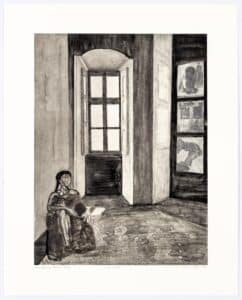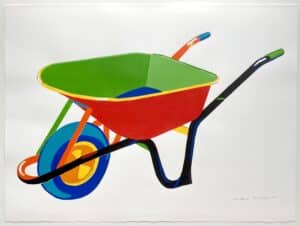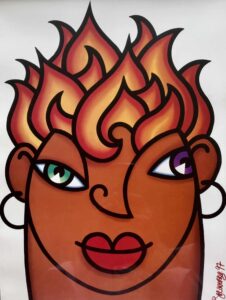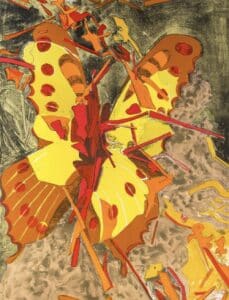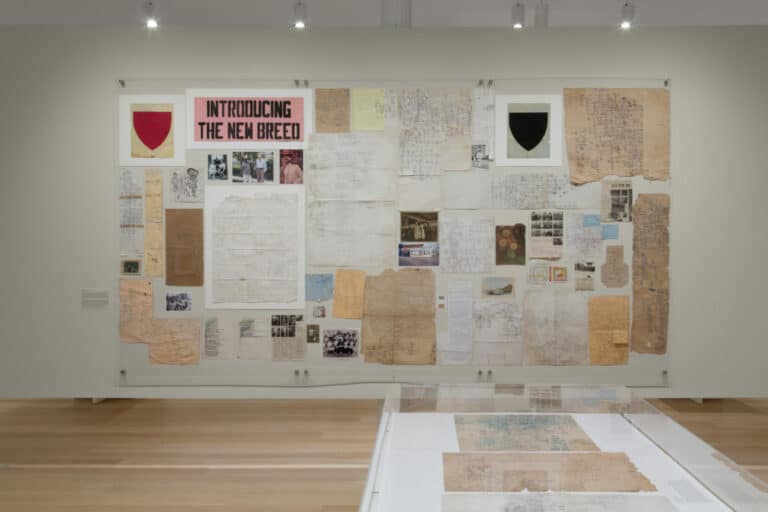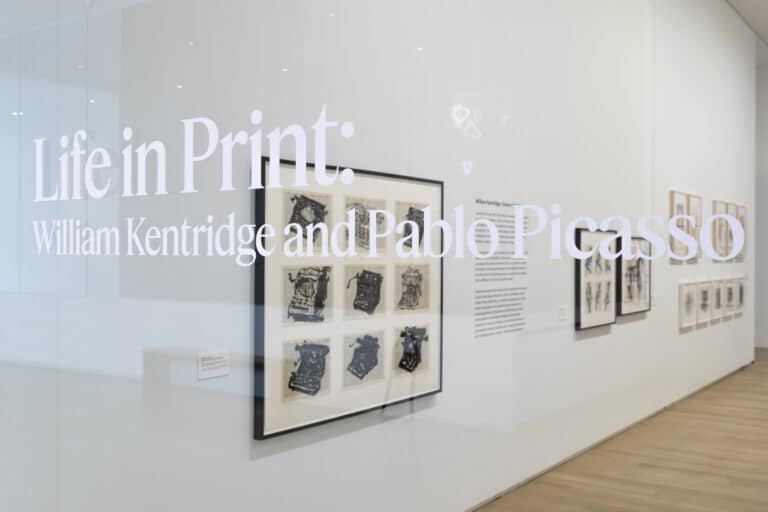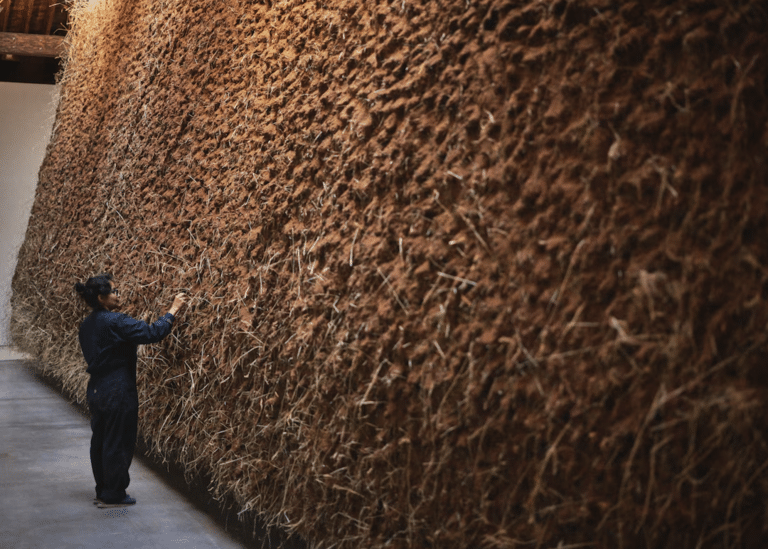Printmaking is a creative and technical practice believed to have appeared as early 200 BC in China with woodblock printing on silk. Today, some of the most notable contemporary artists have built their reputations on prints that have themselves become household names. One need only consider Andy Warhol’s Campbell’s Soup Cans or Katsushika Hokusai’s Under the Wave off Kanagawa to recognize the enduring and diverse nature of printmaking.
In this exhibition, we feature ArtRow works that epitomize the wide range of styles and aesthetics printmaking can bring to life. From Cinthia Sifa Mulanga’s monochromatic representations of female identity to Susan Point’s bold use of colour and composition, each artwork’s timelessness and impact is immediately evident.
A world of mediums and techniques
An original art print is developed through an intricate printmaking process. Unlike the computer-printed reproductions or “prints” that you would find in a museum shop, art printmaking requires the direct involvement of the artist in the creation of each original print.
After etching, carving, or engraving an image onto some kind of matrix such as a wood block, metal plate, or lithographic stone – or creating a layered stencil for a silkscreen method – it is the artist or their master printer who applies the ink and transfers the design to the chosen material (typically paper or fabric).
Prints are legitimate not only because they are done by the “hand of the artist” but also because each print is its own discrete work of art (even though its siblings originate from the same plate or stencil). Variances in ink application across the plate surface, the weave of the paper or canvas, and the number of times the plate has been used—each of these factors imparts tiny differences to every print.
The value of printmaking
Every print in an edition stems from the artist’s communion with the process and bears their signature. As with any medium, various objective factors determine the perceived value of the artwork. One such factor is the number of prints or editions created from a single plate, block, or stencil.
The plate that bears the design may be used to create an open or a limited edition. As the names suggest, the artist will choose to print a design indefinitely or designate a pre-selected number of prints, after which the plate is retired.
Limited editions can result in ten or fewer or several hundred prints. The size of the edition, combined with the artist’s reputation, determines the value of the artwork. In some cases, earlier prints in the run (2 of 50) are more valuable than those created later (49 of 50). Our exhibition features prints in a range of limited edition quantities, from both well-established artists and rising stars.
A wider audience, a greater impact
Many artists incorporate printmaking into their practice and oeuvre. Unlike the singular production of a painting or sculpture, which can only be viscerally experienced in one location at a time, the reproducible nature of prints enables artists to share their ideas with a broader audience.
This expanded dissemination is a worthy result of the complexity required to hone one’s knowledge of and skill in printmaking. Artists may experiment with different processes (lithography, linocut, screenprinting, or monotype, to name only a few) to determine the result that best embodies their vision. From engraving the plates to selecting the ink and paper, the process is a conceptual artistic journey in itself.
An enduring legacy
As an art collector, you can feel confident that the limited edition print you are considering is as much a sound investment as an original painting or sculpture. Simply consider the legacy of Andy Warhol’s unmistakable prints. A rare edition of Queen Elizabeth II recently sold for close to $1 million, despite more humble sales results of around $20,000 two decades ago.
Pieces by “blue chip” artists like David Hockney, Takashi Murakami, and Damien Hirst – those extremely established with many high-value artworks—are far from the only choices for print-savvy collectors. Striking and important prints such as the ones in this exhibition provide a promising investment at an accessible level of the market.
Terms Glossary
Printmaking: the artistic process of transferring an image or design from one medium to another. This includes, for example, a carving on a woodblock transferred to paper or a stencil on a screen transferred to fabric.
Limited edition: The creation of a set of prints, of any type, that is limited in its output. Each print is numbered with its place in the run and the total size of the edition (for example: 2 / 50). When the total number of prints has been created, the matrix (woodblock, silkscreen, etc) is retired and no further prints of this design will be created.
Open edition: The creation of a set of prints, of any type, that is unlimited in its output. Unlike limited editions, the prints will not be numbered. Open edition prints are usually less expensive than limited editions due to their greater quantity.
Intaglio: A common printmaking style wherein the design is cut into a flat surface, rather than the blank space being cut away. The resulting image is incised rather than in relief.
Etching: An intaglio printmaking process performed by incising lines into a metal plate using an etching needle. Then, the plate is dipped in acid, which eats away only at the areas scratched by the needle. Ink applied to the plate is held in the grooves and transferred to the paper when pressed. See Cinthia Sifa Mulanga, William Kentridge, and Lawrence Paul Yuxweluptun’s work.
Silkscreen: Also known as serigraphy, this stenciling technique involves cutting a design out of a strong material and rolling or spraying ink or paint through the stencil to transfer the inverse design onto paper or fabric. The name stems from the superfine silk mesh often used to support the stencils. See Paula Scher, John Newsom, and Susan Point’s work
Letterpress printing: A printmaking process that requires raised surfaces, usually wood, metal, or linoleum, to be inked and pressed to paper. The name comes from the similar process adopted by Johannes Gutenberg, the creator of the first printing press.
Monoprint: A printmaking process by which the resulting artwork can only be reproduced one time. This singular characteristic may be due to the artist’s addition of hand-colouring, drawing, or collage that cannot be produced the same way again


